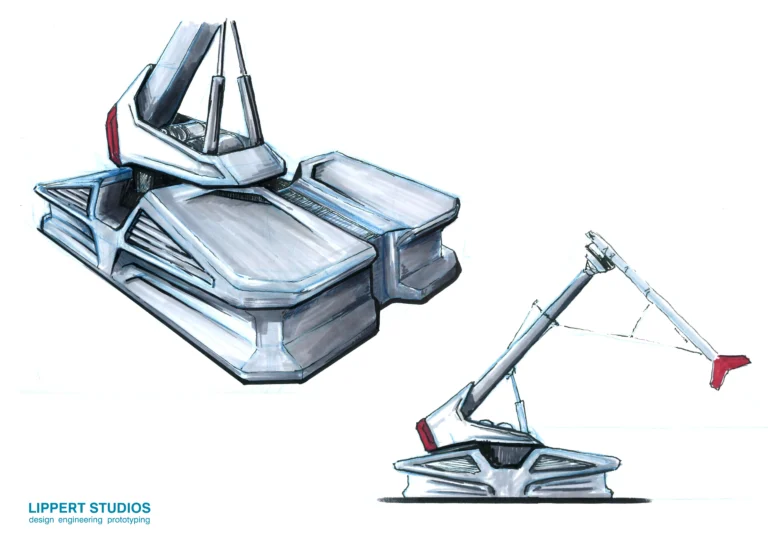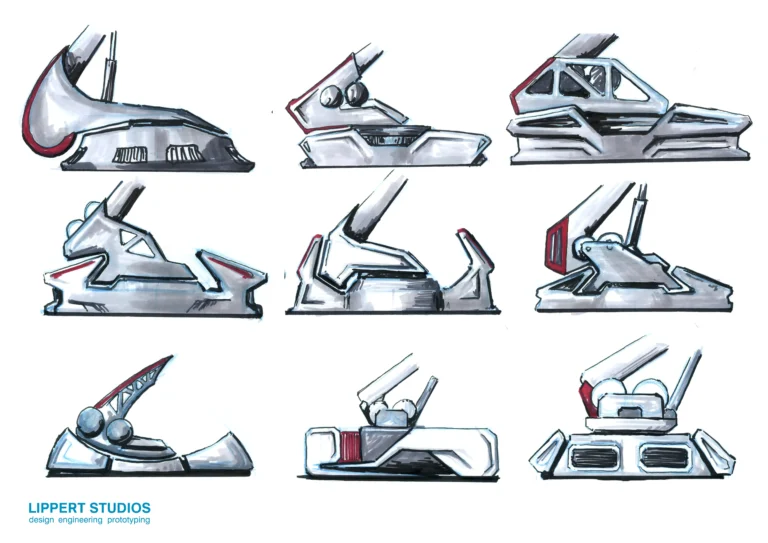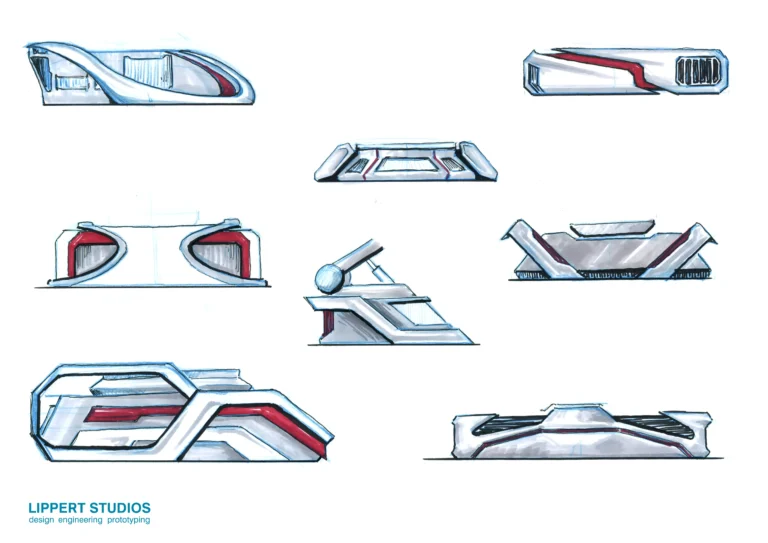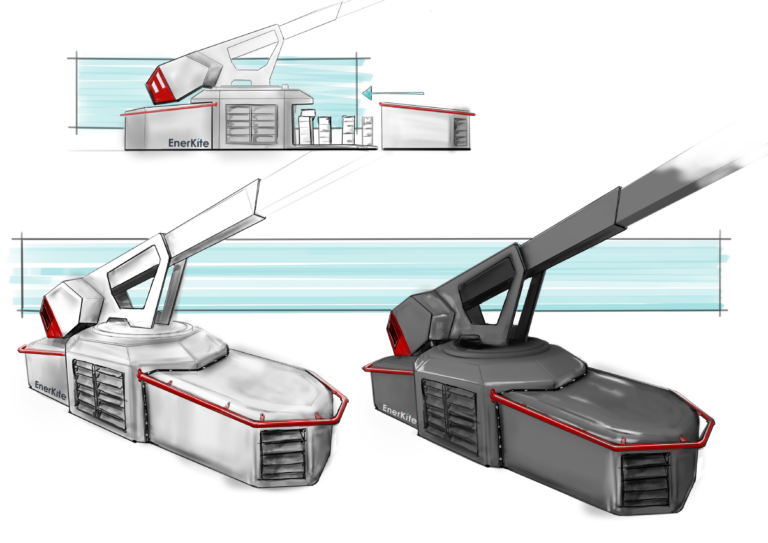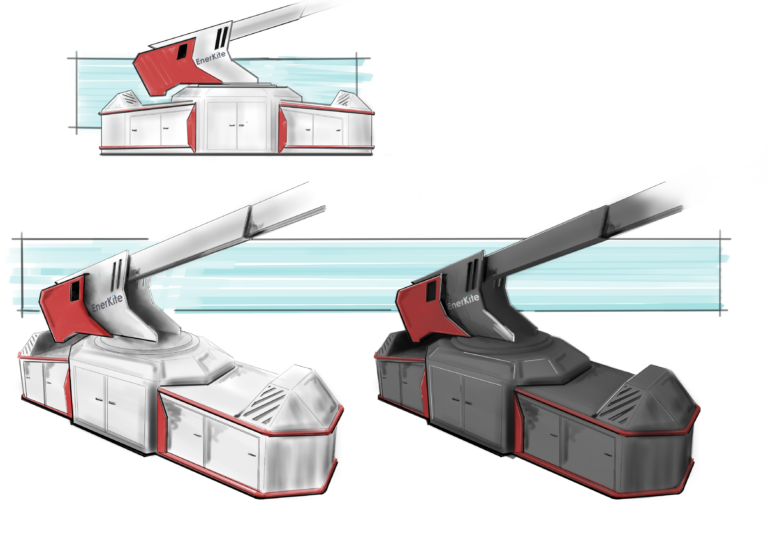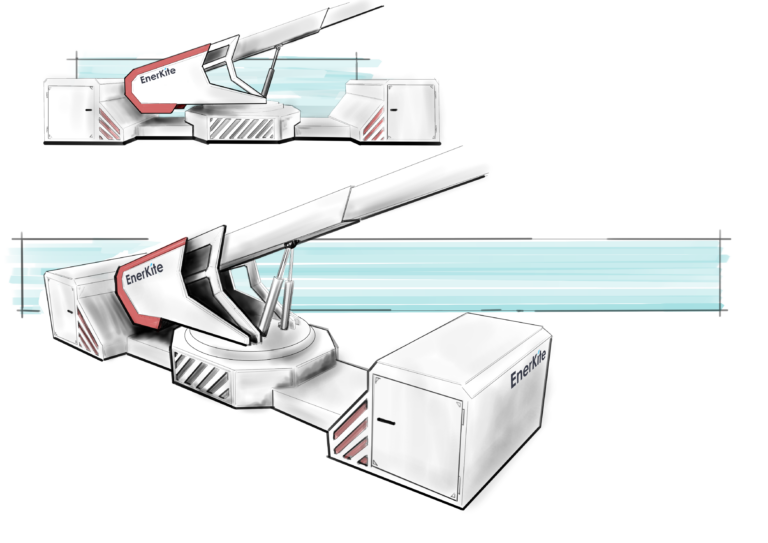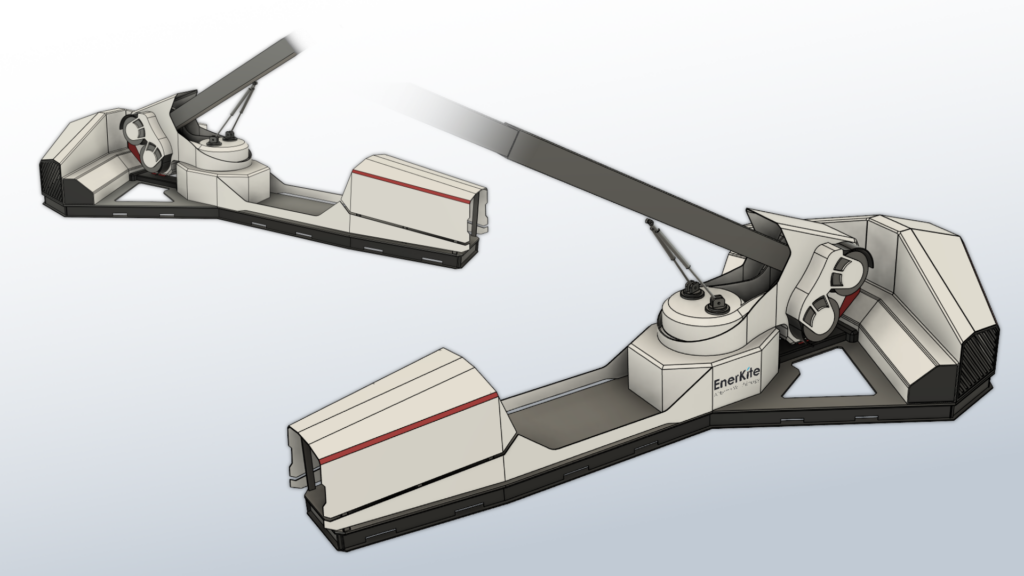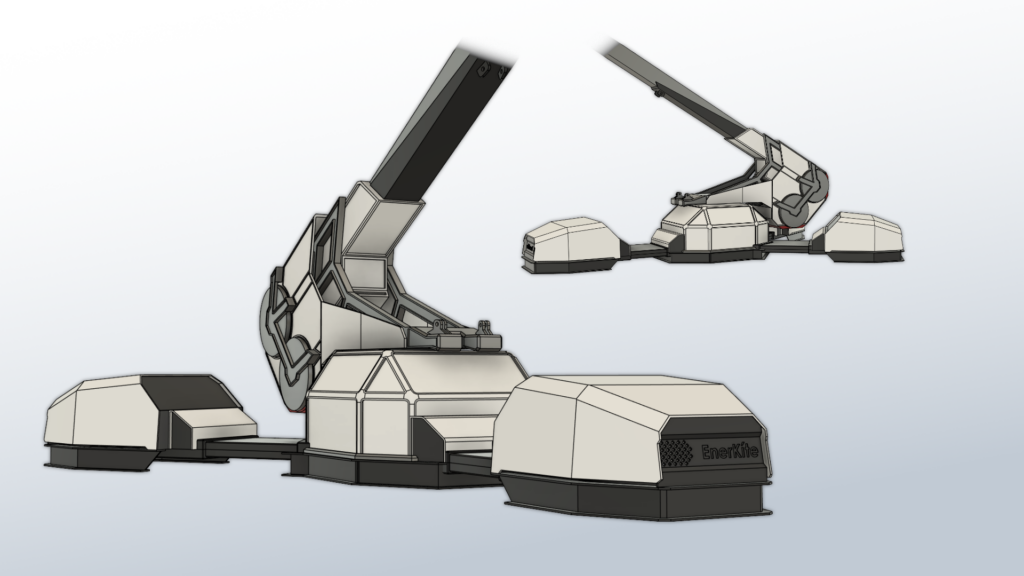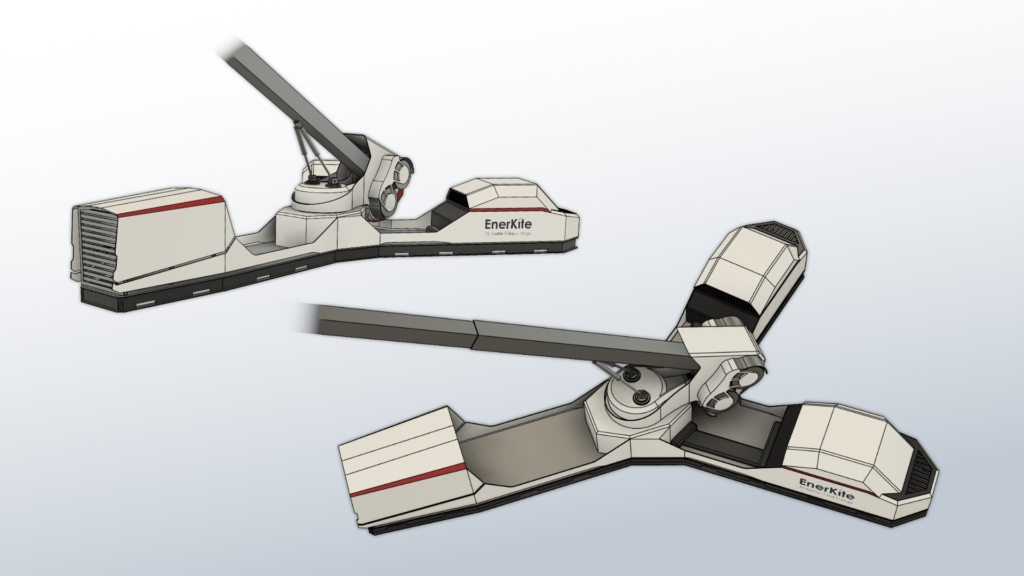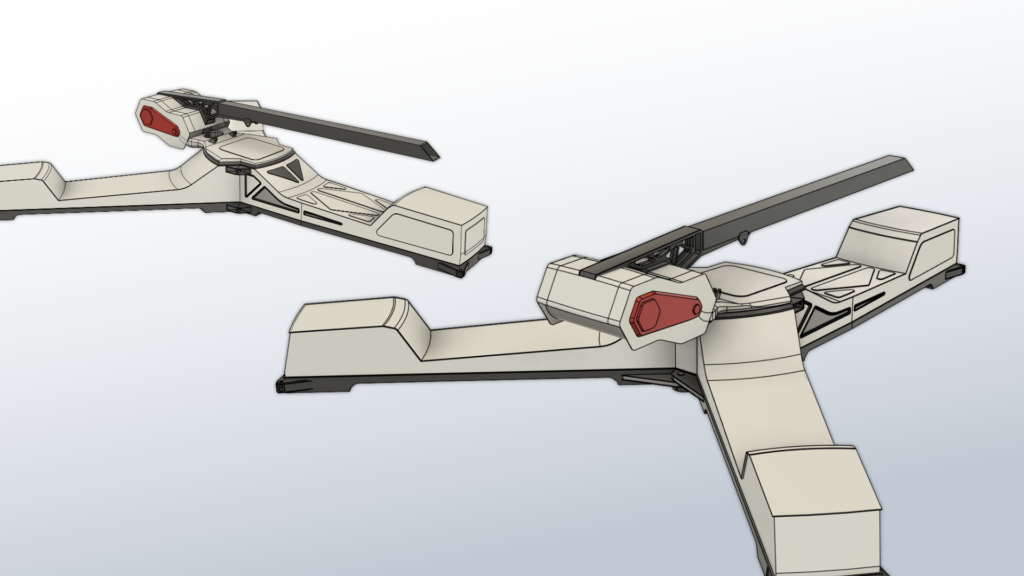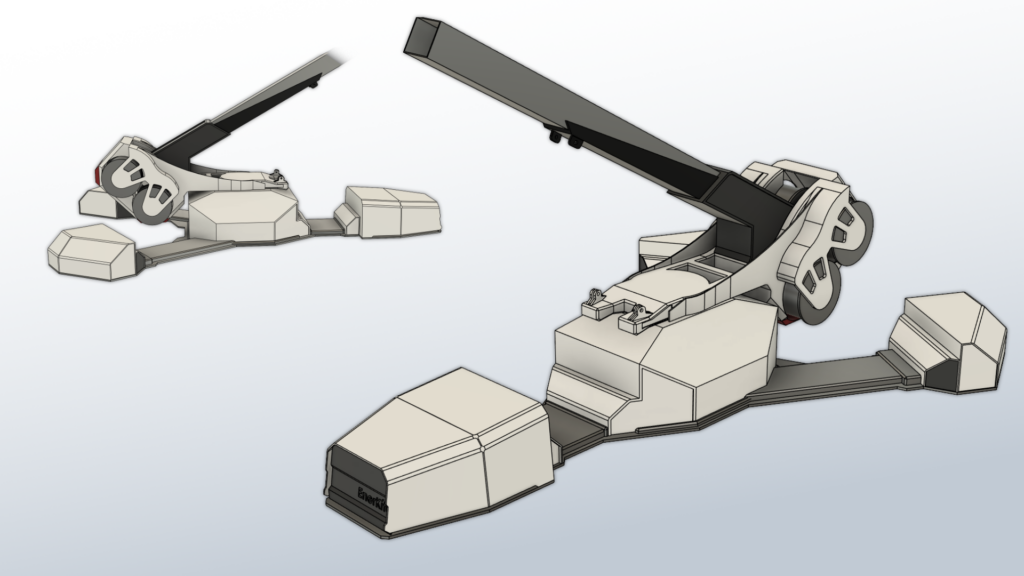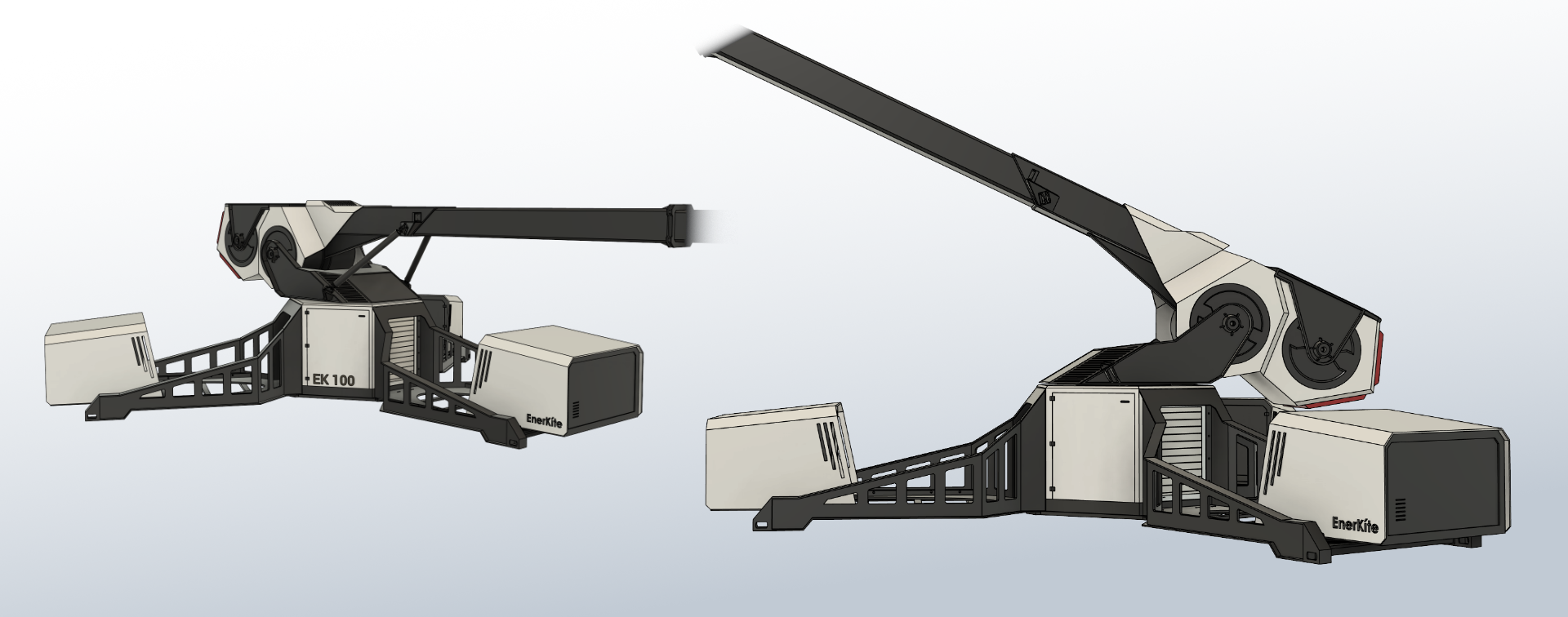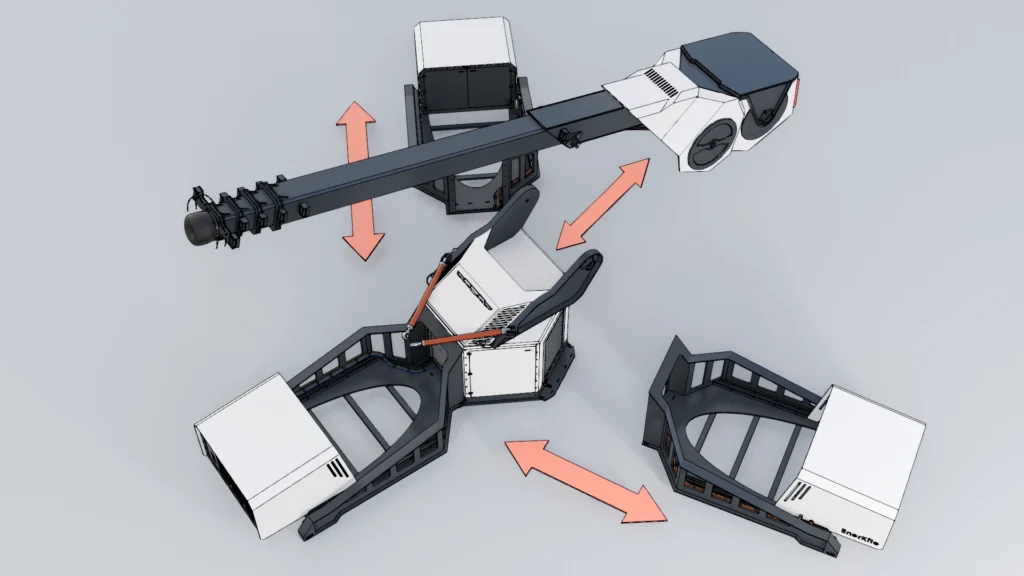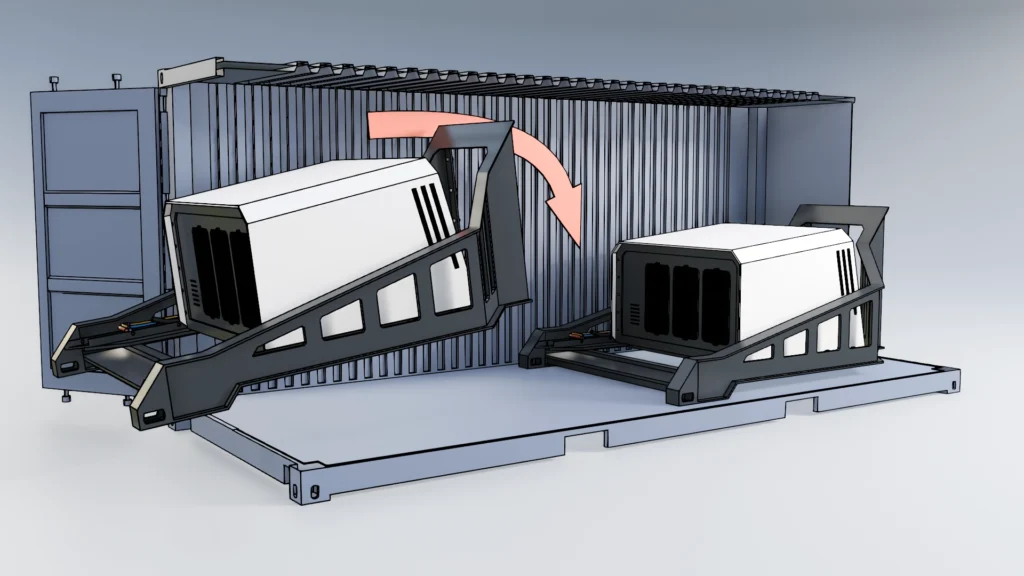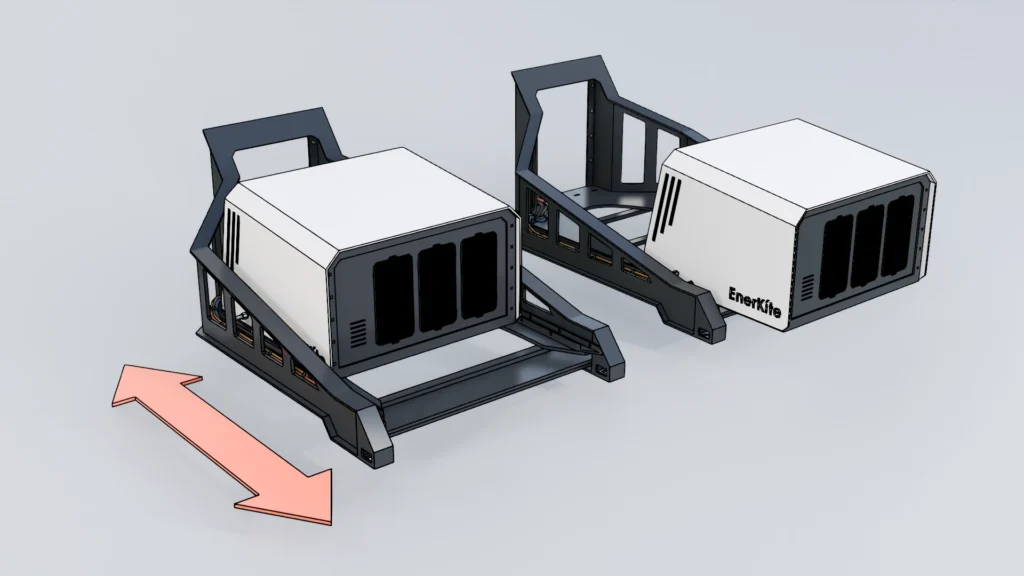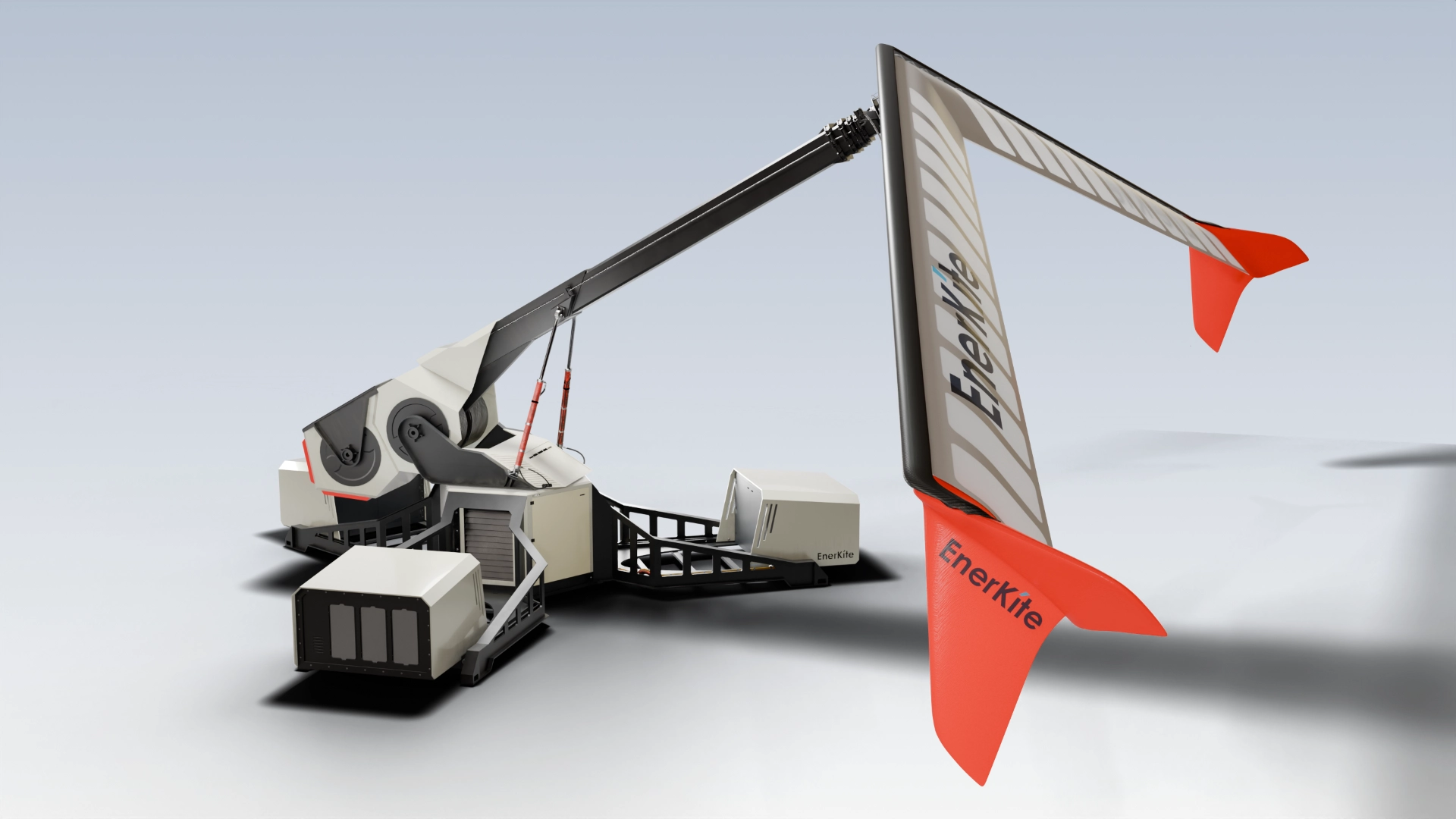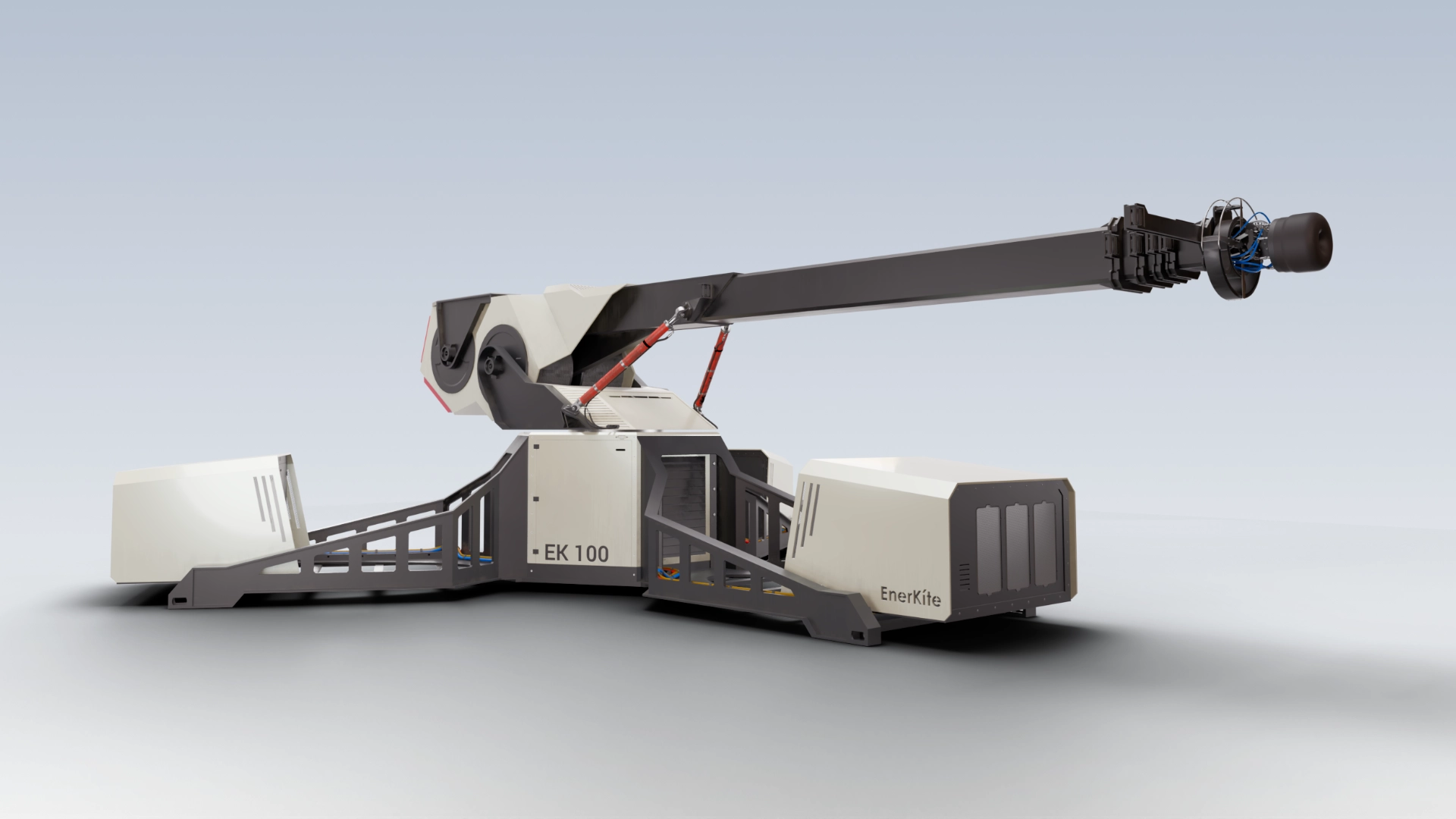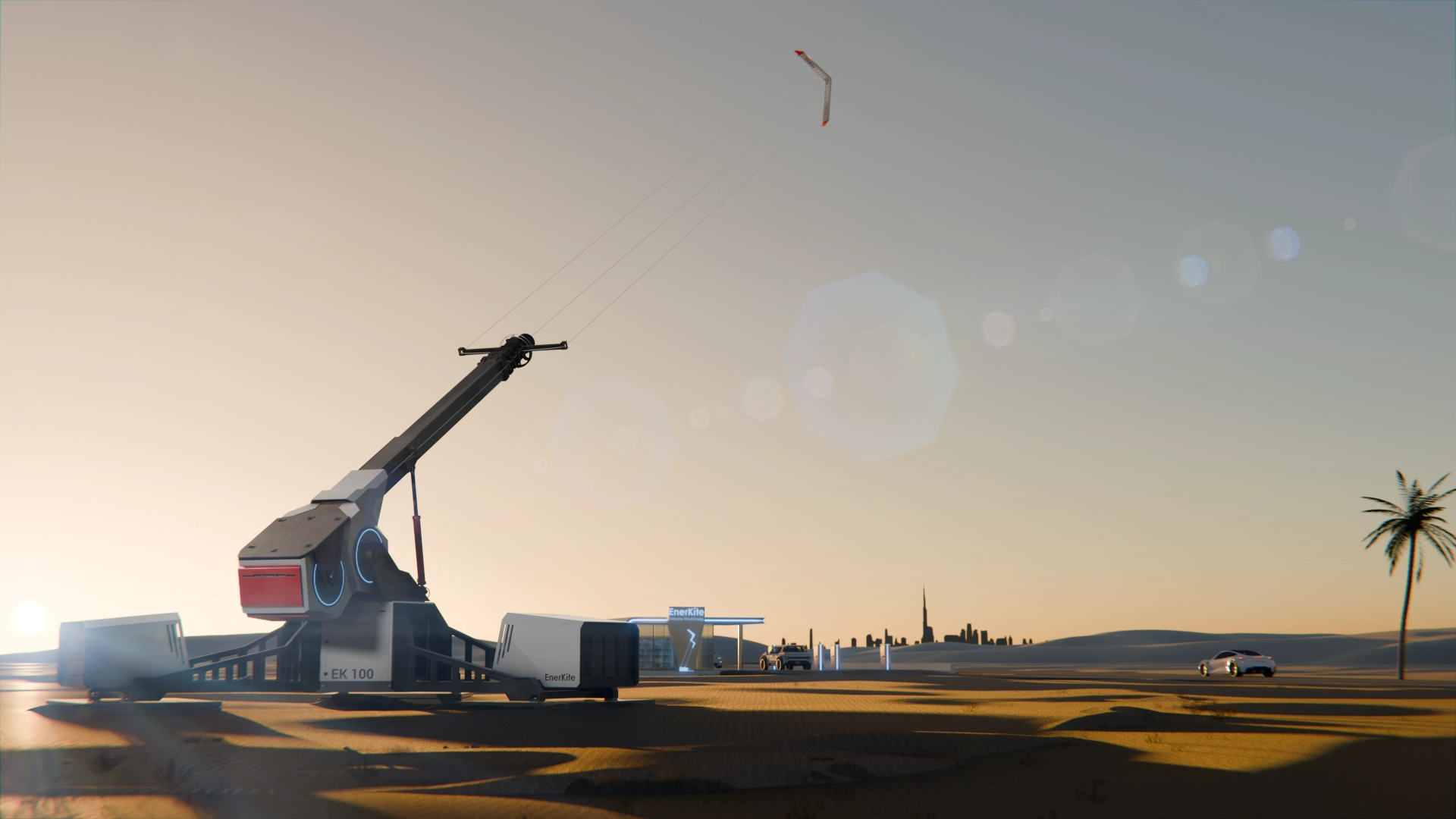Product design for the EnerKíte EK100 airborne wind turbine
We set the standard for airborne wind energy.
Before the EnerKíte EK100, there was no clear benchmark for airborne wind energy, neither in design nor in operation or integration into the energy market. The EK100 base station fundamentally changes this and defines a new industry standard. Designed for scalability, reliability, and low-maintenance operation, it is built to last. Its robust plug-and-play system - the result of the EnerKíte EK100 product design, proves itself even in demanding environments, making the EK100 the cornerstone of innovative airborne wind energy.
Defining Airborne Wind Energy
The initial stages of approaching a design that looks to define a new segment of the market involve research and function definition of the product at hand. In collaboration with the client, we define a set of values and goals that define the quintessence of the product, from its functional aspects to its perceived image. These concepts are then connected with aspects either emotionally engaging with the product or references of products and services that excel in that way.

The initial research acts as the backbone to define the design limitations of the product. We explore preliminary concepts for styling, functionality and user interactions, working closely with the client in order to reach design decisions that will be carried over to the next phase.
CAD Models
Design variations created in 3D
Moving to a 3D workspace brings the product to life, not only allowing the team to view it from all angles but to consider more functional aspects. Here the team considers, and iterates on the product's manufacturability, disassembly and reassembly, physical form and scale, transportability and scalability for different use cases.
Usability
Design considerations for unsability
Considering usability along the entire process is crucial for a product that is to be manufactured. Decisions made early in the process will be iterated upon in future versions and having the product aspects align with the end goal means less reworking, and more adjusting.
Post-design outcomes
With many iterations, all defining specific aspects and details of the product, a final design is produced. This is then detailed in technical drawings for patenting as well as manufacturing propositions and plans for the future. This initial design lays out the basis for further development, prototyping and testing of key elements, and lends itself as the backbone from which the product will further be refined and manufactured.
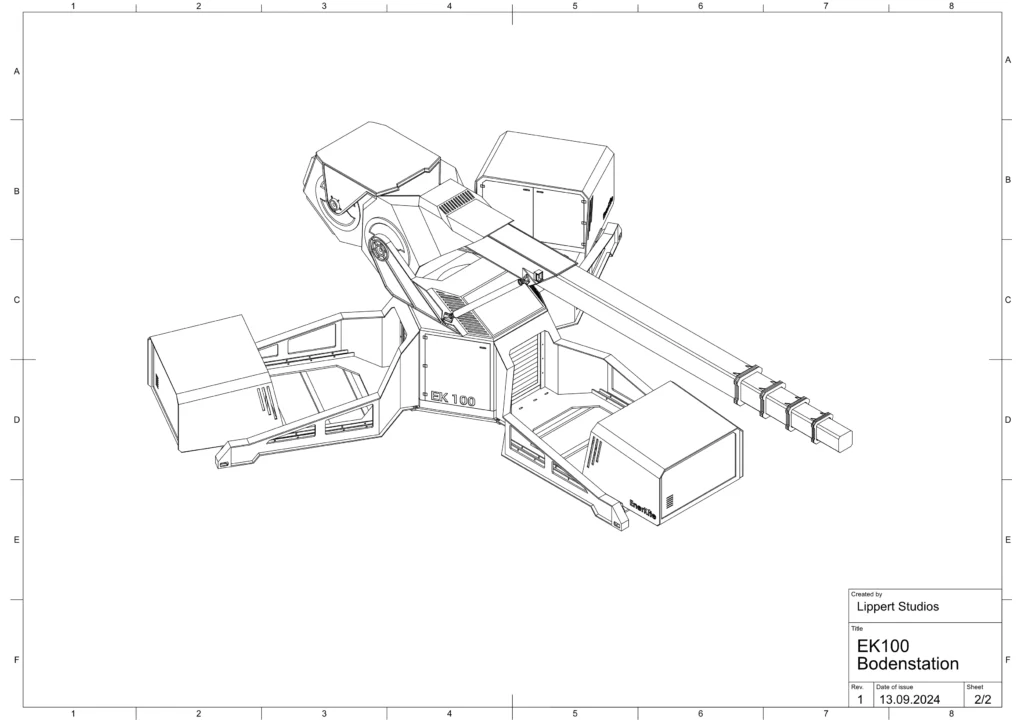
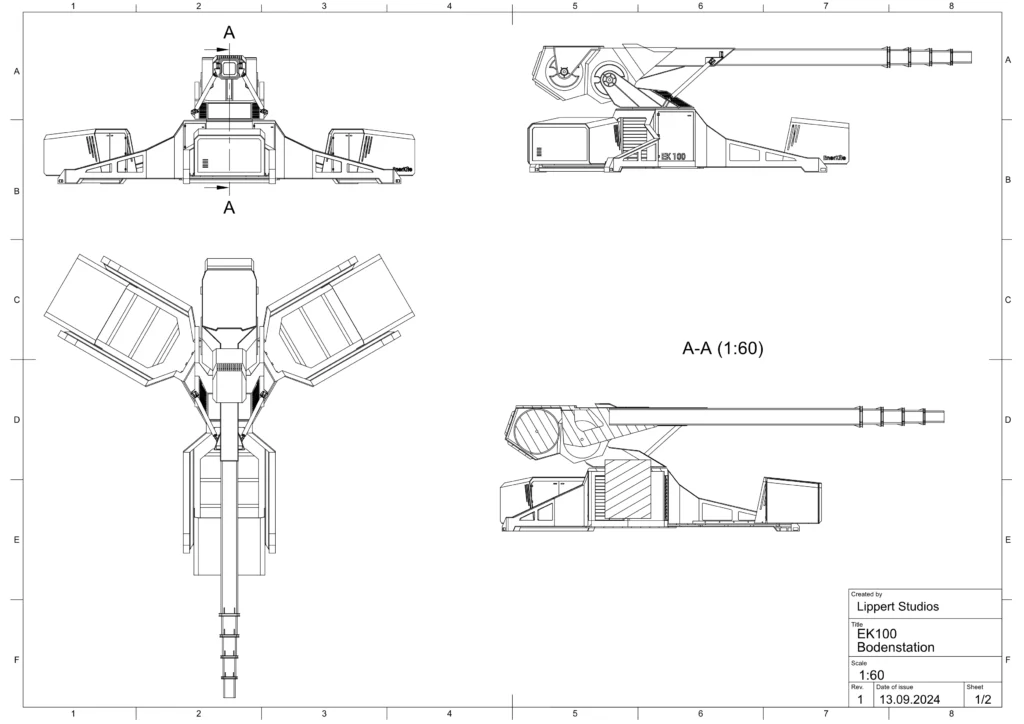
Product Visualization
Another essential phase of the design process is presenting the product to the public. Once the design iterations are complete, all critical aspects have been addressed and every stakeholder is happy with the result, we shift to product visualization. This is where 3D rendering truly excels. Using the digital models we’ve created, we apply textures, lighting and environments to place the product in a ‘real-world’ context. This approach not only provides a clear sense of scale and functionality but also creates marketing and reference materials to support the product’s journey beyond the initial design phase.
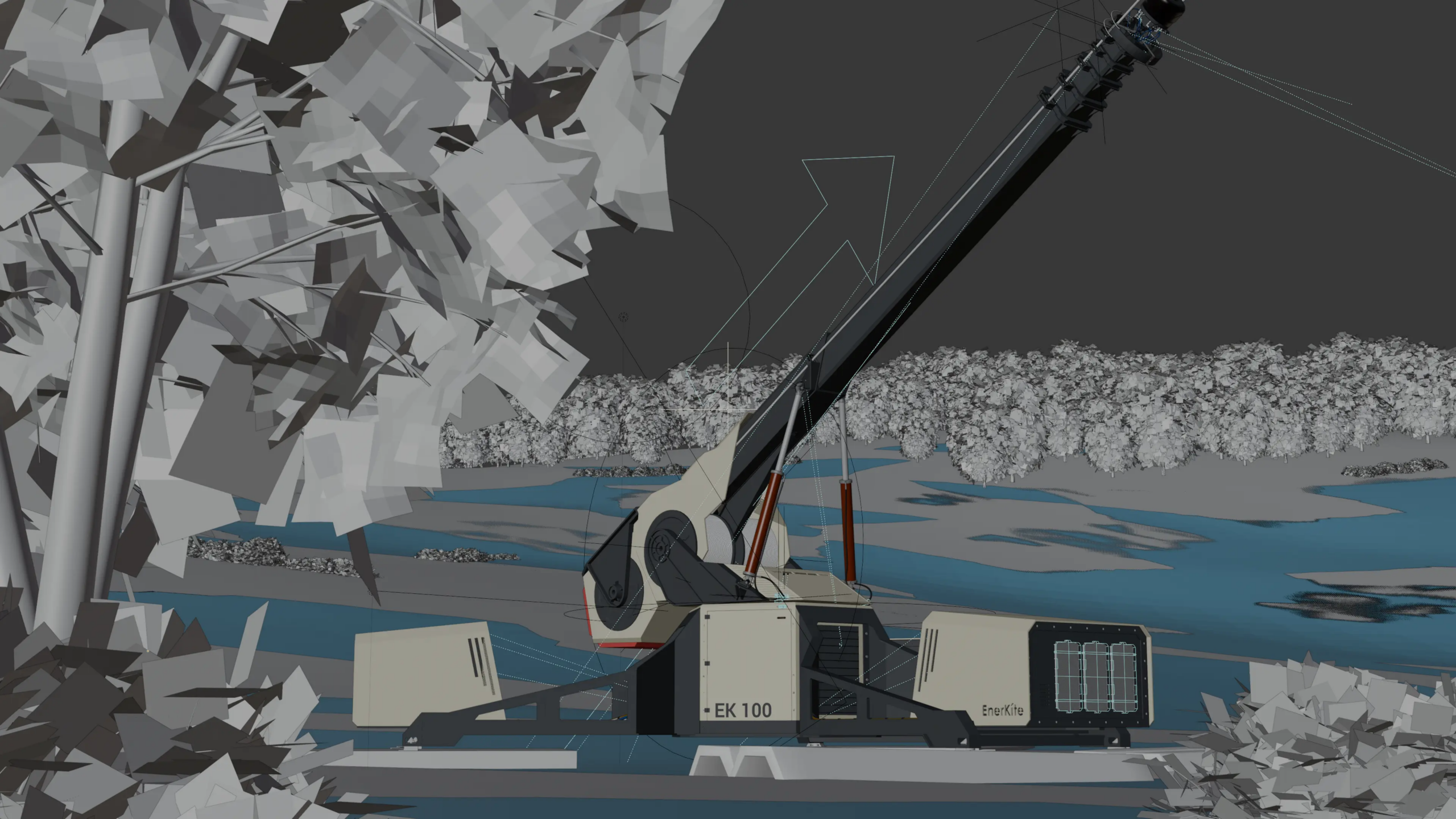
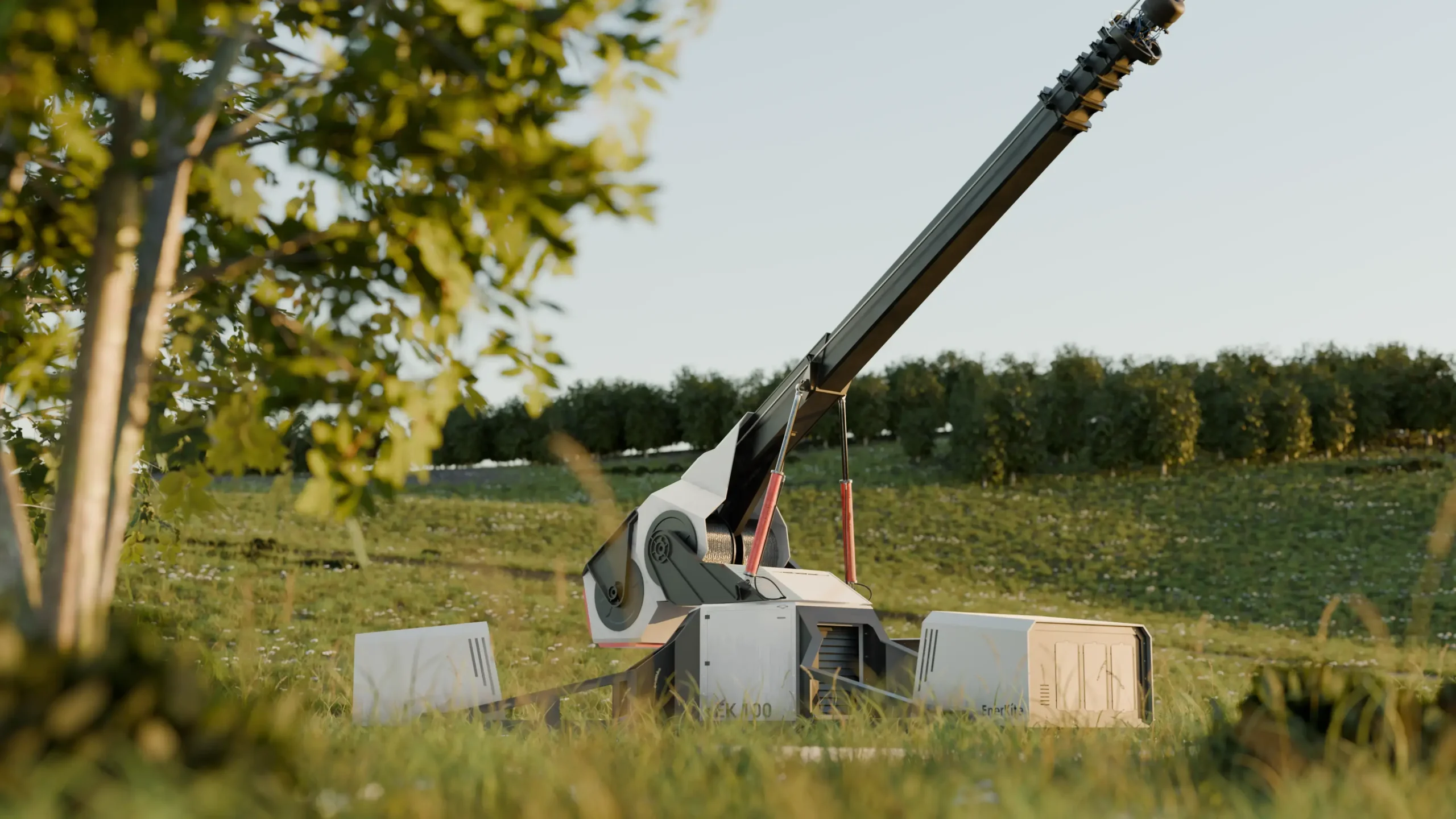
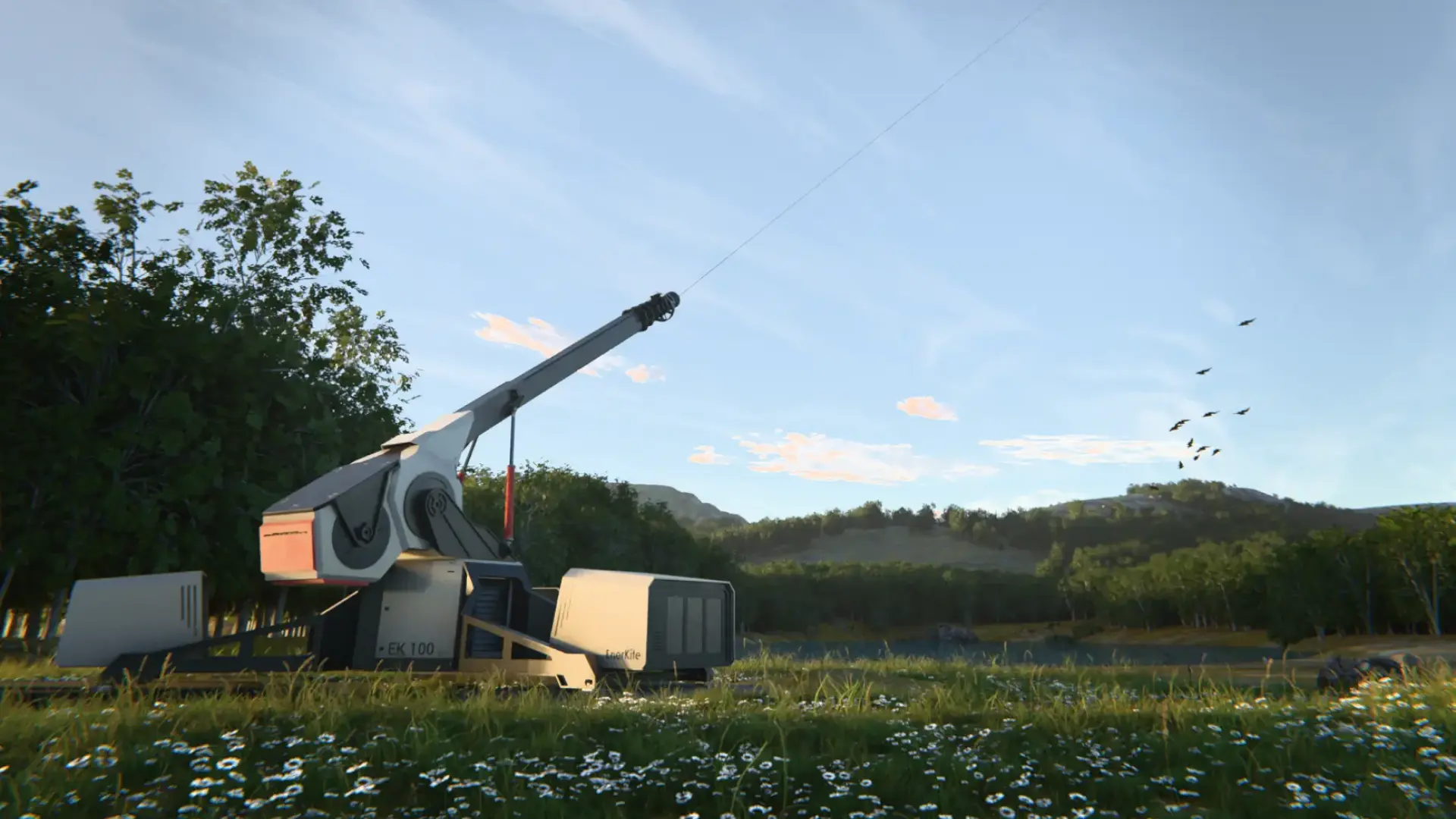
A 3D render of the final product

